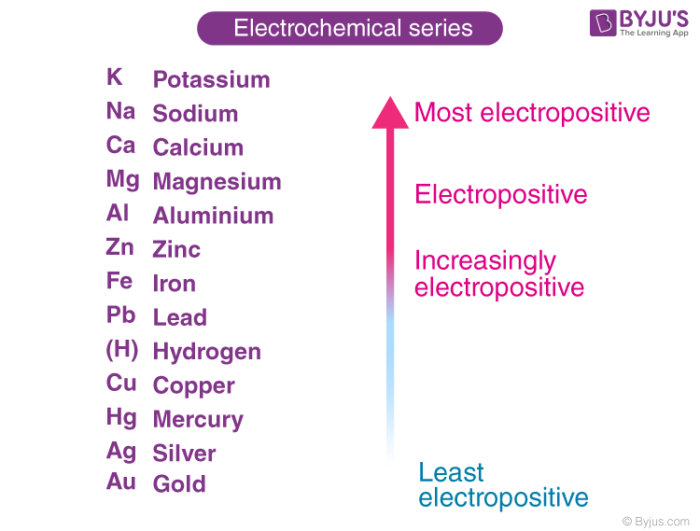The elements are classified as metals and non-metals based on several chemical and physical properties. However, in this article, we will be dealing with the topic of metals and their properties and further understand why some elements are classified into such category.
Table of Contents
What Are Metals?
Metals are the electropositive element that tends to donate electrons and form positive ions and become stable. For example:
Na → Na+ + e–
Metals also generally have certain distinguishing physical properties that make them easy to identify and classify.
Some main physical properties of metals are;
-
-
- They have lustre and a metallic appearance.
- They are usually in the form of a solid at room temperature.
- They are very good conductors of electricity and heat.
- Metals are malleable and ductile.
- They mostly have a very high melting point.
-
Chemical Properties of Metals Let us look at some chemical properties of metals as well.
Reaction Of Metal With Oxygen
Metals react with oxygen to form metal oxides. Metals donate electrons to oxygen for the formation of metal oxides. For example,
4K + O2 → 2 K2O
Metal oxides are generally basic in nature but it can also be amphoteric in nature. Amphoteric oxides mean that they are acidic as well as basic in nature. Some metals like sodium and potassium react vigorously with oxygen. Whenever sodium or potassium is exposed to air it catches fire. Hence, they are kept in kerosene.
Reaction Of Metal With Water
Some metals react with water to form metal hydroxide whereas some of them do not react. Reactivity with water differs from metal to metal.
Metals like sodium and potassium are highly reactive. They react with water to form alkalis such as sodium hydroxide and potassium hydroxide.
2Na + 2H2O → 2NaOH + H2
Calcium also reacts with water to form calcium hydroxide and hydrogen.
Ca + 2H2O → Ca(OH)2 + H2
Whereas, magnesium and zinc do not react with cold water. They form their respective oxides when reacted with hot water.
Mg + H2O → MgO + H2
Iron is less reactive than sodium, potassium, calcium, zinc and magnesium. It does not react with cold and hot water, but it reacts with steam to form magnetic oxides.
3Fe + 4H2O → Fe3O4 + 4H2
Reaction With Dilute Acids
Metals like sodium, potassium, lithium and calcium react vigorously with dilute HCl and H2SO4 to form their metal salt and hydrogen.
While magnesium, zinc, iron, tin and lead do not react vigorously with acids.
Mg + HCl → MgCl2 + H2
Fe + H2SO4 → FeSO4 + H2
Metals which fall below hydrogen in the reactivity series do not react with dilute acids. They cannot displace hydrogen to form a bond with a non-metal anion.
Reaction of Metal With Other Metal Salts
Metals that are more reactive will readily with less reactive metals. More reactive metal displaces the less reactive metal from its oxides, chlorides or sulphides.
Zn + CuSO4 → ZnSO4 + Cu
Metals are arranged according to the electrode potential of metals. The electrochemical series is shown below.

Knowing this electrochemical series we will get to know which metal can displace which metal in a chemical reaction. Keep visiting BYJU’S to know more about non-metals and elements in detail.
Recommended Videos
Properties of Metals and Non-Metals


Comments